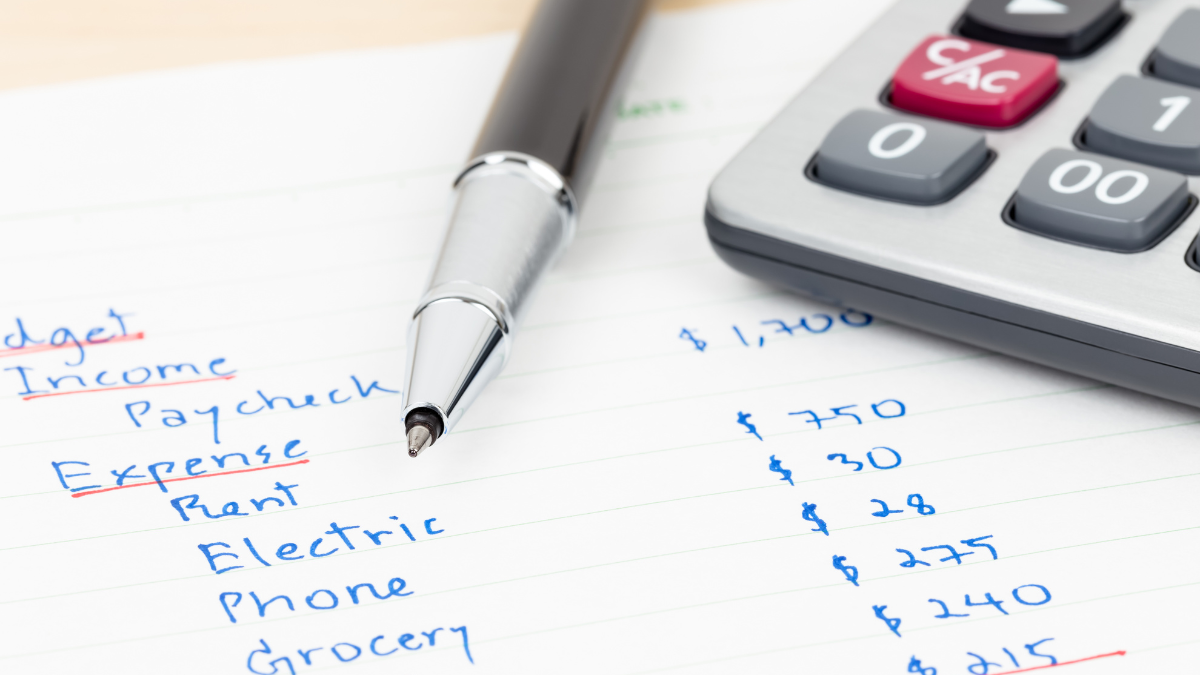If you’ve ever sat down with good intentions to “finally get your money together” and then stared at a blank page… you’re in good company.
Budgeting can feel intimidating, but it doesn’t have to be. When you break it down into simple steps, a monthly budget becomes one of the most comforting tools you’ll ever use.
I talk about setting and making a budget all the time, but where do you even start? What does that even mean?
A good budget doesn’t restrict you. It tells your money where to go so you can stop guessing, stop stressing, and start feeling in control again.
Haven’t printed out the monthly budget planner yet? Grab it now so you can follow along.
Here is how to set up a monthly budget that actually works for your life.
How To Make A Monthly Budget
1. Start With Your Income
Before you can plan anything, you need to know exactly what you’re working with each month.
Write down:
- Your take-home pay
- Any side income
- Benefits or regular deposits
- Child support or alimony (if applicable)
Use the number you can count on, not your “best month ever.” A realistic budget starts with a realistic income.
Once you have your total, this becomes the foundation for every decision you make.
2. List Your Fixed Expenses
Fixed expenses are the bills that don’t change much month to month. They’re the easiest part of your budget because you already know what to expect.
Common fixed expenses include:
- Rent or mortgage
- Car payment
- Insurance
- Utilities
- Phone
- Internet
- Subscriptions
Add them up and subtract them from your income. This gives you a clear picture of how much wiggle room you have for the rest of your spending.
3. Estimate Your Variable Expenses
Variable expenses are the categories that shift from month to month. This is where most people get stuck. Groceries, gas, eating out, kids’ activities, household items, and all the little things that sneak in.
Here’s the easiest way to do it:
Look at your spending from the last 1–3 months and write down the average amount for each category. If you don’t have past data, make your best guess and adjust next month.
Some helpful categories to track:
- Groceries
- Transportation
- Restaurants and takeout
- Fun money
- Personal care
- Household supplies
You don’t have to get this perfect. You just need a starting point.
4. Add Savings and Debt Payments
This is the step people skip—and the step that makes the biggest difference.
Even if you’re working on paying off debt or trying to build savings, set something aside every month. It can be small. What matters is consistency.
Decide how much you want to put toward:
- Your emergency fund
- Extra debt payments
- Sinking funds (holidays, car repairs, medical, etc.)
Think of savings and debt as “must-pays,” not optional items.
5. Give Every Dollar a Job
A budget works best when you tell your money where to go before the month starts.
Take your income and assign every dollar to a category: bills, groceries, savings, fun, everything. This is called a zero-based budget. It doesn’t mean you have zero dollars left. It means every dollar has a purpose.
This step helps you prevent overspending and gives you control instead of confusion.
6. Track as You Go (This Is Where the Magic Happens)
You don’t need to track every single penny perfectly, but you do need to know if you’re staying on budget.
You can:
- Use the spending log in your planner
- Check your bank app a few times a week
- Review receipts
- Do a quick weekly reset
Tracking keeps your budget alive. Without it, the numbers you wrote on day one don’t mean much.
Think of it as checking in with yourself, not policing yourself.
7. Adjust and Reset Every Month
A budget that works is a budget that evolves. Some months will feel easy. Some will feel like absolute chaos. That doesn’t mean you failed, but it does mean you’re human and that life doesn’t always work out the way we think it will.
At the end of the month, look at:
- What went well
- What went over
- What needs adjusting next time
- Any upcoming expenses you need to plan for
This is where your budget becomes stronger and more accurate. Every month, you learn something new about your spending, your habits, and what actually works for you.
Setting up a monthly budget doesn’t have to feel heavy or complicated. When you take it step by step, you give yourself the gift of clarity and peace. Over time, budgeting becomes less about restriction and more about freedom. You have the freedom to plan, to prepare, and to spend without guilt.
You deserve a budget that works for your real life. And you’re absolutely capable of creating one.
Read More:
- How To Use the Cash Envelope System To Budget Your Money Effectively
- Everything You Need To Know About The 50/30/20 Budget
- Everything You Need To Know About Emergency Funds

